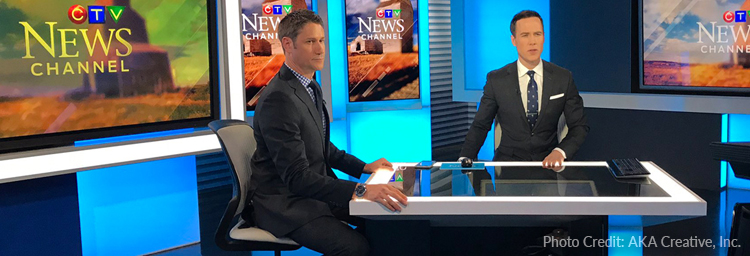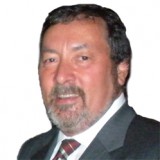Several years ago, I was asked to design the lighting for the much-anticipated renewal of Canada’s leading sports channel. Early on in the design process, I was cornered by one of the producers and the senior director and told “don’t forget the lights in the desk!” ESPN had apparently installed some Par 20’s in their new desk, and now we were expected to do the same. I discovered, however, during a site visit to the ESPN studio in Connecticut that the embedded desk lights were turned off almost as fast as they had been turned on. It turns out that the sportscasters did not care for the hot lights beaming up at them from the center of their desk and began surreptitiously moving their script into a perfect “flag” position and undoing any good the light may have done.
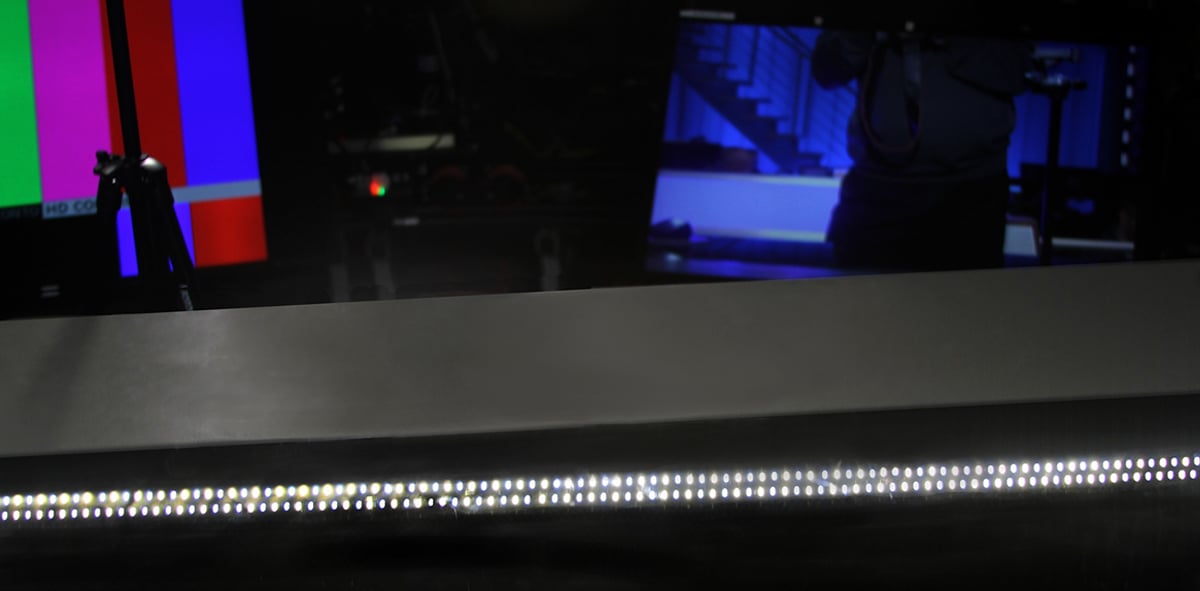 Two rows of RoscoLED VariWhite Tape are mounted on a 45° angle along the front edge of a news desk – out of view of the cameras but fully effective in lighting the anchor.
Two rows of RoscoLED VariWhite Tape are mounted on a 45° angle along the front edge of a news desk – out of view of the cameras but fully effective in lighting the anchor.
To be honest, for the bulk of my career, the idea of embedding lights into a news desk has somewhat bothered me too. If the key lights were causing unsightly shadows on the anchors’ faces, that only meant that I had not placed the key lights in the proper place.
I don’t know what changed. Perhaps we all get a little older and wiser (the anchors get older and the LD’s get wiser – right?). My thinking about direct light emanating from the desk changed once LEDs turned studio lighting on its ear – especially once I began working with RoscoLED® Tape VariWhite.
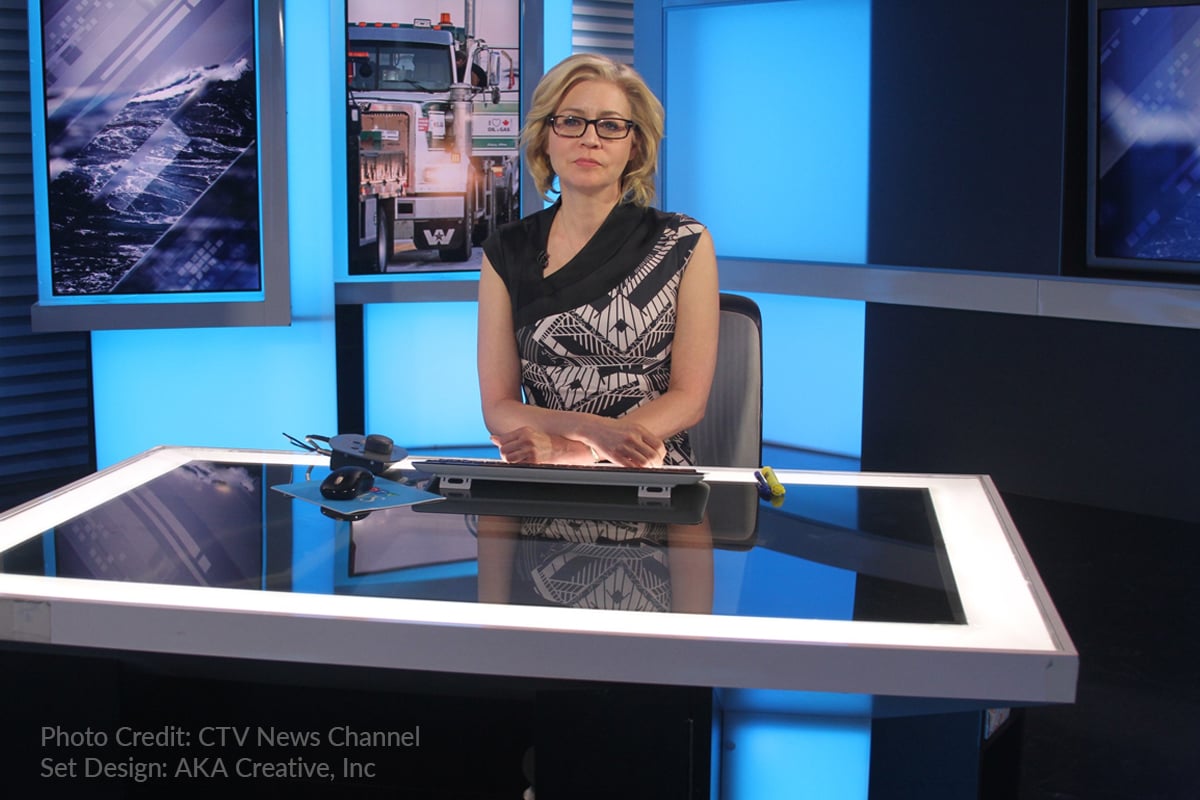 RoscoLED Tape VariWhite with a diffused acrylic panel on top provides a soft fill-light around the perimeter of this news desk for both the anchor and any guests on the sides.
RoscoLED Tape VariWhite with a diffused acrylic panel on top provides a soft fill-light around the perimeter of this news desk for both the anchor and any guests on the sides.
In the HD/4G world we live in, some may shy away from any kind of shadow. Plus, there’s the old adage that “a softly lit anchor is a happy anchor.” I would counter by saying “a well-lit anchor is a happy anchor.” While some may like the two-dimensional “soft” look that several, heavily diffused instruments or a bank of soft lights can provide, I still believe that we live in a three-dimensional world and that shadow is not a dirty six-letter word. As long as the lights, the camera and the talent are perfectly placed – your picture will be pleasing to all.
 The RoscoLED Tape perimeter lights turned off (L). Same exact setup, but with the RoscoLED Tape perimeter lights in play (R).
The RoscoLED Tape perimeter lights turned off (L). Same exact setup, but with the RoscoLED Tape perimeter lights in play (R).
A double or triple row of RoscoLED Tape helps lift the areas under the nose and chin out of the darkness. Not only does it remove those shadows, it does so without the unnatural “up light” effect of a Par 20 or an MR16. The added beauty of the VariWhite product is that you can also match the color temperature and intensity of any existing key/fill light source. More importantly, it also does so without bothering the anchor and, because it’s installed on the front edge of the desk, scripts, notes and other papers won’t “accidentally” end up covering the lights.
I’ve noticed that set designers are embracing this technique as I’ve seen several innovative solutions for integrating LED tape into news desks to provide this much needed illumination. Options for mounting RoscoLED Tape include routing channels into the desk itself or installing RoscoLED Tape Profiles onto the perimeter of the desk.
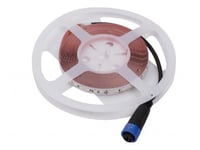 If you’re designing an updated news desk for your studio or looking for ways to improve the lighting on your anchors – visit the RoscoLED Tape product page and explore the VariWhite and Profile product pages.
If you’re designing an updated news desk for your studio or looking for ways to improve the lighting on your anchors – visit the RoscoLED Tape product page and explore the VariWhite and Profile product pages.

